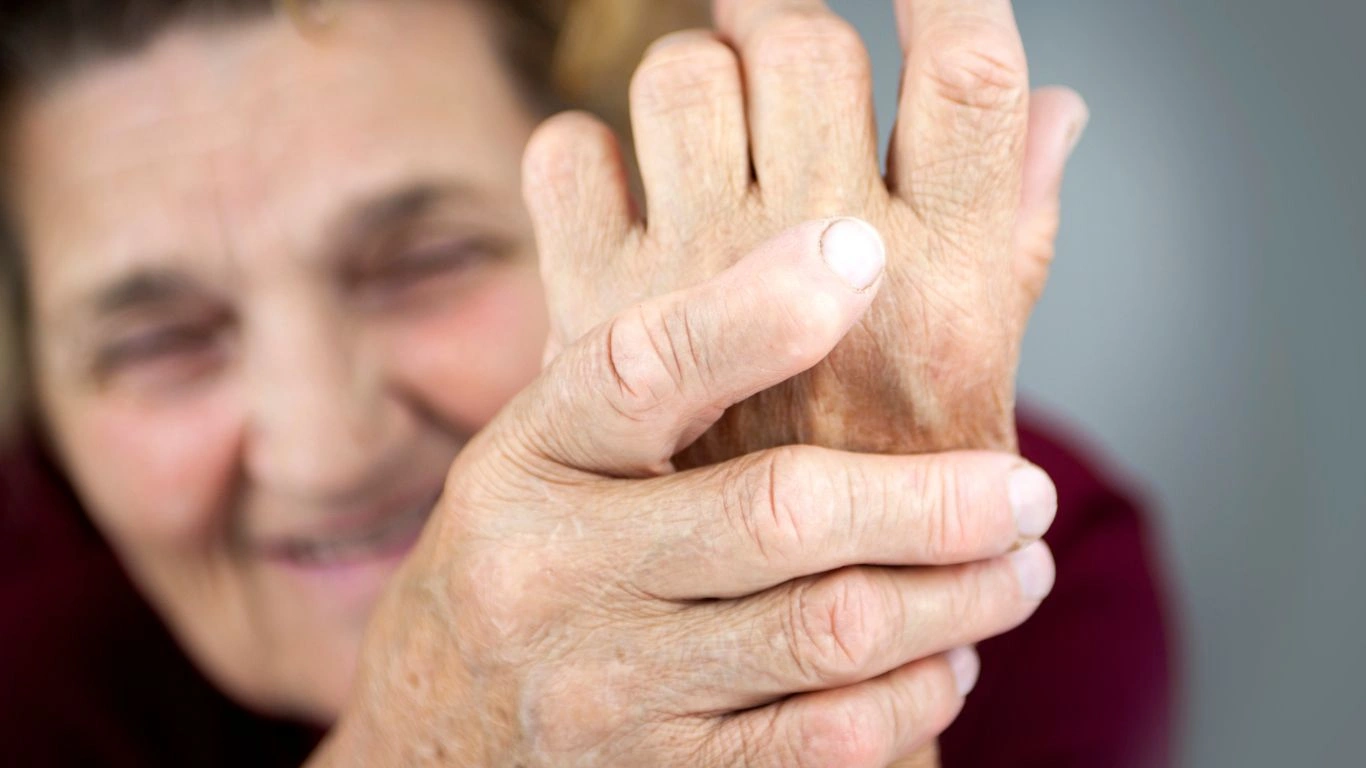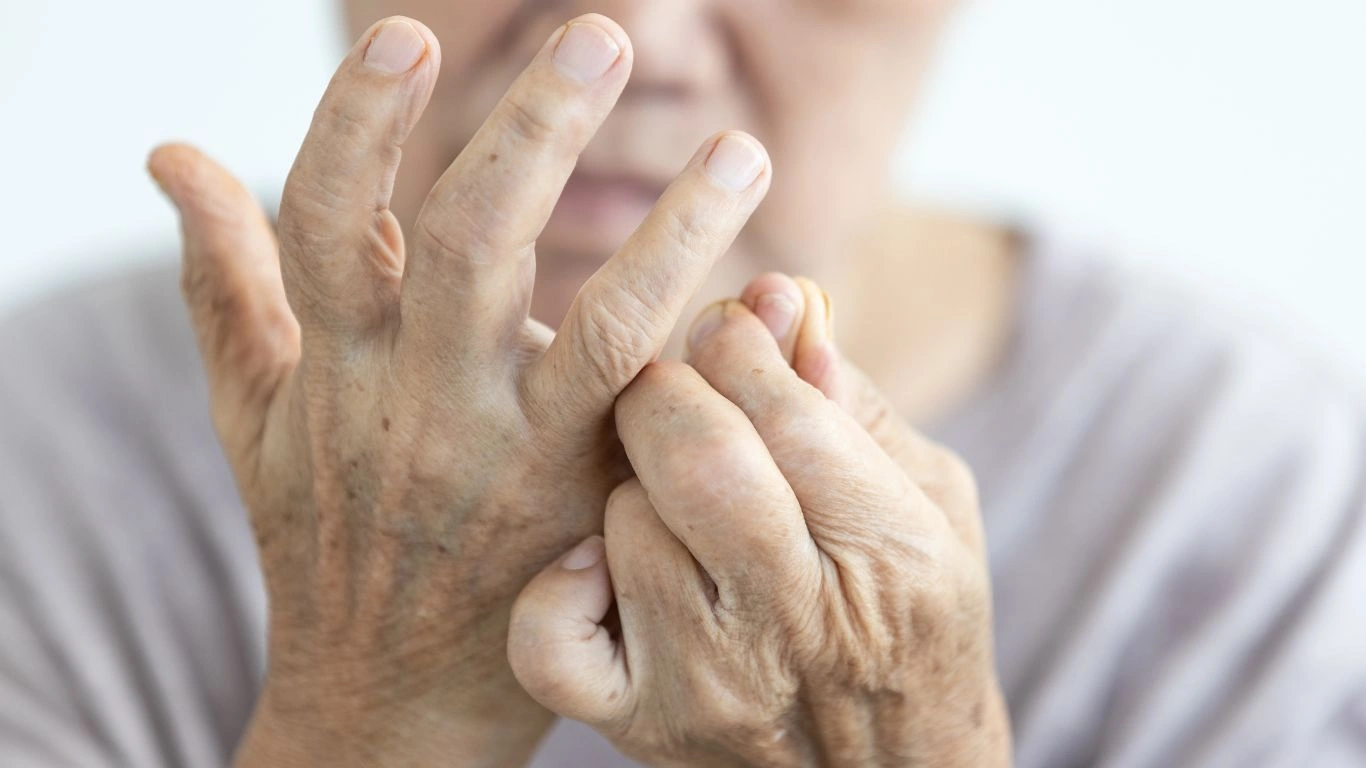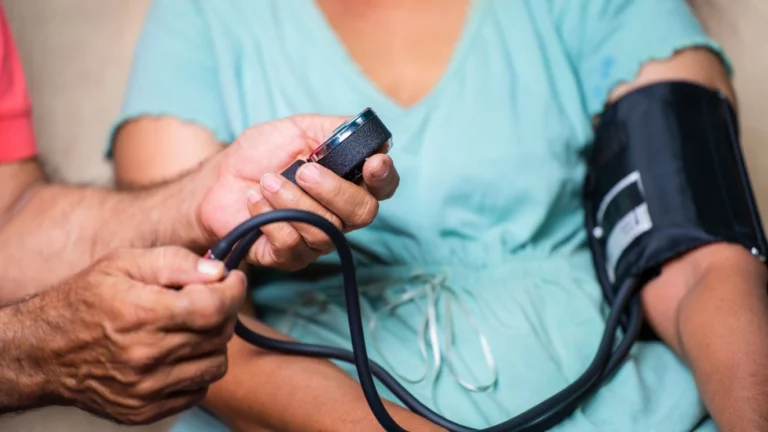Best Strategies for Managing Joint Inflammation with Rheumatoid Arthritis
Managing joint inflammation with rheumatoid arthritis can feel like an uphill battle. If you’ve been living with RA, you know it’s not just about the pain—it’s the stiffness in the morning, the swelling that makes simple tasks frustrating, and the unpredictable flare-ups that throw your whole routine off track. But the good news? You’re not alone. I’ve spent years helping people navigate this chronic condition, and I’m here to share practical, real-world strategies that actually make a difference.
Understanding Rheumatoid Arthritis and Joint Inflammation
Rheumatoid arthritis (RA) isn’t just “regular” arthritis. It’s an autoimmune disorder, which means your immune system mistakenly attacks your joints. The result? Chronic inflammation that can lead to joint damage if left unchecked. Unlike osteoarthritis, which happens due to wear and tear, RA causes your immune system to go into overdrive, attacking the synovium—the lining of your joints.
So why does inflammation matter so much? Well, when your joints are inflamed, they become swollen, stiff, and painful. Over time, this ongoing inflammation can wear down cartilage and even affect surrounding tissues. That’s why controlling inflammation is one of the biggest keys to managing rheumatoid arthritis effectively.
Common Symptoms of Joint Inflammation in RA
If you’re experiencing joint inflammation due to RA, you’re probably familiar with these symptoms:
- Swelling and redness: Your joints may look puffy and feel warm to the touch.
- Morning stiffness: That feeling when your joints just won’t cooperate for the first hour (or longer) of the day.
- Persistent pain: Some days, it’s a dull ache; other days, it’s a sharp, stabbing pain.
- Fatigue: Inflammation doesn’t just affect your joints—it drains your energy, too.
How to Manage Joint Inflammation with Rheumatoid Arthritis

Managing joint inflammation with rheumatoid arthritis isn’t just about taking medications (though they definitely help!). It’s about creating a lifestyle that supports your joints and reduces flare-ups. I’ve seen firsthand how small, consistent changes can make a world of difference.
1. Anti-Inflammatory Foods to Support Joint Health
You know that saying, “You are what you eat”? Well, when it comes to RA, your diet plays a massive role in managing inflammation. Certain foods can either fuel or fight inflammation, and making the right choices can significantly impact how you feel.
Here’s what I always recommend including in your diet:
- Fatty fish: Salmon, sardines, and mackerel are packed with omega-3s, which help reduce inflammation.
- Leafy greens: Spinach, kale, and Swiss chard are loaded with antioxidants that protect your joints.
- Berries: Blueberries, strawberries, and raspberries have anti-inflammatory compounds.
- Turmeric: This golden spice contains curcumin, a powerful anti-inflammatory agent.
- Olive oil: A great alternative to vegetable oils, it has natural inflammation-fighting properties.
And on the flip side, here are some foods that can worsen inflammation:
- Processed foods: Fast food, packaged snacks, and sugary treats can spike inflammation.
- Red meat: High in saturated fats, which can trigger inflammatory responses.
- Refined carbs: White bread, pasta, and pastries can contribute to joint pain.
2. The Power of Regular, Gentle Movement
When your joints are inflamed, exercise might be the last thing on your mind. I get it—some days, even getting out of bed feels like a challenge. But movement is crucial for keeping your joints flexible and reducing stiffness.
The trick is to find gentle activities that don’t put too much stress on your joints. Some of my favorites include:
- Yoga: Great for flexibility and relaxation. Plus, it helps reduce stress, which can trigger flare-ups.
- Swimming: The buoyancy of water takes the pressure off your joints while allowing for a full-body workout.
- Walking: A low-impact way to keep moving without overdoing it.
- Stretching: Helps maintain range of motion and prevent stiffness.
Consistency is key. Even if you start with just 5-10 minutes a day, it’s better than nothing!
Understanding the Role of Stress in Inflammation

If there’s one thing I’ve learned over the years, it’s that stress is one of the biggest inflammation triggers. Have you ever noticed that your symptoms seem worse when you’re overwhelmed or anxious? That’s because stress causes the body to release cortisol, a hormone that, in excess, can contribute to inflammation.
Ways to Manage Stress for Better RA Control
Finding ways to lower stress can make a noticeable difference in your joint health. Here are a few techniques I swear by:
- Mindfulness meditation: Just 10 minutes a day can help lower stress levels and improve pain perception.
- Deep breathing exercises: Slow, deep breaths can calm the nervous system and reduce inflammation.
- Quality sleep: Poor sleep increases stress and inflammation—aim for at least 7-8 hours per night.
- Journaling: Writing down your thoughts can be a great way to process emotions and relieve stress.
Taking control of stress doesn’t just help your mind—it helps your body heal, too.
Medications and Treatments for Managing RA Inflammation

Let’s be real—managing joint inflammation with rheumatoid arthritis often requires more than just lifestyle changes. As much as I love a good anti-inflammatory smoothie, sometimes your body needs extra help. That’s where medications come in. Now, I always remind my patients that treatment is not one-size-fits-all. What works for one person might not work for another, so it’s all about finding the right balance.
1. Disease-Modifying Anti-Rheumatic Drugs (DMARDs)
If you’ve been diagnosed with RA, chances are your doctor has talked to you about DMARDs. These aren’t your typical pain relievers—DMARDs work behind the scenes to slow down the disease progression, preventing long-term joint damage.
Common DMARDs include:
- Methotrexate: One of the most prescribed RA medications. It helps suppress the immune system’s attack on the joints.
- Hydroxychloroquine: Originally used for malaria, this drug can reduce inflammation and pain over time.
- Leflunomide: Works similarly to methotrexate by slowing the overactive immune response.
Now, DMARDs don’t work overnight. It can take weeks or even months before you notice improvements, which can be frustrating. But trust me—sticking with the treatment plan is worth it in the long run.
2. Biologic and Targeted Synthetic DMARDs
For those who don’t respond well to traditional DMARDs, biologics are a game changer. These medications are designed to target specific parts of the immune system responsible for inflammation.
Some common biologics include:
- TNF inhibitors: (like Humira and Enbrel) block a protein called tumor necrosis factor, which fuels inflammation.
- IL-6 inhibitors: (like Actemra) target interleukin-6, another inflammation-causing culprit.
- JAK inhibitors: (like Xeljanz) work differently by blocking enzymes that contribute to joint inflammation.
The downside? Biologics can be pricey, and they may slightly increase the risk of infections since they suppress parts of the immune system. But for many people, the benefits outweigh the risks.
3. Corticosteroids and NSAIDs
Let’s talk about quick relief. Corticosteroids like prednisone can rapidly reduce inflammation and pain, but they’re not a long-term solution. Why? Because they come with side effects like weight gain, mood swings, and even bone loss if used for too long.
Then there are NSAIDs (like ibuprofen and naproxen). They’re great for temporary relief but won’t stop RA from progressing. I always tell my patients to use them sparingly—think of them as a band-aid, not a cure.
Home Remedies and Natural Approaches for RA Relief

Medications are fantastic, but sometimes, we need a little extra support. Over the years, I’ve had patients try everything from herbal teas to acupuncture, and while results vary, there are definitely some natural remedies worth considering.
1. Heat and Cold Therapy
Simple but effective! When your joints are aching, alternating between heat and cold can work wonders.
- Heat therapy: A warm compress, heating pad, or even a hot shower can relax stiff joints.
- Cold therapy: Ice packs help reduce swelling and numb sharp pain.
Personally, I love using a warm paraffin wax bath for my hands—it’s soothing and helps with stiffness.
2. Essential Oils and Herbal Remedies
Some patients swear by essential oils for pain relief. While they’re not a replacement for medication, they can provide some extra comfort. A few good options include:
- Turmeric oil: Known for its anti-inflammatory properties.
- Ginger oil: Can help with pain and circulation.
- Peppermint oil: Provides a cooling sensation that eases discomfort.
Applying these oils with a carrier oil (like coconut or jojoba) and massaging them into sore joints can be a simple way to find relief.
3. Acupuncture and Massage Therapy
Acupuncture might sound intimidating (hello, tiny needles!), but many people with RA report reduced pain and better mobility after sessions. The idea is that it helps balance the body’s energy flow and stimulates natural pain relief mechanisms.
Massage therapy is another great option. A gentle, RA-friendly massage can improve circulation and relax tense muscles. Just make sure to find a massage therapist experienced in working with autoimmune conditions.
Daily Habits to Reduce Joint Inflammation
At the end of the day, managing rheumatoid arthritis isn’t just about medications or the occasional ice pack—it’s about the daily choices you make. Here are a few habits I encourage my patients to adopt:
1. Stay Hydrated
Sounds simple, but dehydration can actually worsen inflammation. Aim for at least 8 glasses of water a day to keep your joints lubricated.
2. Get Enough Sleep
Poor sleep increases inflammation—there’s no way around it. Try setting a bedtime routine, avoiding screens before bed, and keeping your bedroom cool and dark.
3. Maintain a Healthy Weight
Extra weight puts more strain on your joints. Even a small amount of weight loss can reduce RA symptoms and improve mobility.
4. Avoid Smoking and Excess Alcohol
Smoking is a major RA trigger—it actually makes inflammation worse. Alcohol, in excess, can also increase joint pain. Cutting back on both can make a noticeable difference.
Small changes add up over time, and the more you support your body, the better you’ll feel. RA may not have a cure yet, but with the right approach, you can absolutely take control of your joint health.
Case Studies & Real-Life Examples

One of the most powerful ways to understand managing joint inflammation with rheumatoid arthritis is through real-life stories. Over the years, I’ve worked with many patients who’ve struggled with RA, and their journeys highlight the ups and downs of finding the right treatment and lifestyle balance.
1. Sarah: The Power of Consistency
Sarah, a 42-year-old mother of two, was diagnosed with RA in her early 30s. At first, she resisted medication, hoping that diet and exercise alone would be enough. After years of trial and error, she found that a combination of low-dose methotrexate, regular swimming, and an anti-inflammatory diet gave her the best results.
Her biggest lesson? Consistency. She admitted that sticking with her treatment plan—especially on pain-free days—was challenging. But once she fully committed, her flare-ups became much more manageable.
2. Mark: Finding the Right Medication
Mark, a 55-year-old retired firefighter, went through six different RA medications before finding the right fit. His first few years post-diagnosis were filled with frustration, but eventually, a combination of a TNF inhibitor, daily stretching, and stress management helped him regain mobility.
His advice? Don’t give up. What works for one person may not work for another, and it takes time to figure out the best approach.
3. Lisa: The Role of Mental Health
Lisa, a 38-year-old yoga instructor, struggled more with the emotional toll of RA than the physical symptoms. She found that stress was a major trigger for her flare-ups. After incorporating mindfulness, meditation, and therapy into her routine, she saw a huge improvement in both her pain levels and overall well-being.
Her takeaway? Taking care of your mind is just as important as taking care of your joints.
Key Takeaways: What You Need to Remember
Let’s sum it all up. If you take away nothing else from this guide, remember these key points:
- There is no one-size-fits-all approach. RA is different for everyone, and managing joint inflammation requires patience and experimentation.
- Medications help, but lifestyle changes matter too. A combination of the right meds, movement, and diet can make a world of difference.
- Listen to your body. If something isn’t working, don’t be afraid to talk to your doctor and adjust your treatment plan.
- Consistency is key. Whether it’s medication, diet, or exercise—sticking with it is the only way to see real results.
- Support is essential. Whether it’s family, friends, or an online community, having a strong support system makes the journey easier.
FAQs
1. Can rheumatoid arthritis go into remission?
Yes! While there’s no official cure for RA, many people experience periods of remission where symptoms dramatically improve or disappear. This usually happens with the right combination of medication, lifestyle changes, and stress management.
2. What’s the best diet for managing joint inflammation with rheumatoid arthritis?
There’s no single “RA diet,” but many people benefit from an anti-inflammatory diet. This includes:
- Omega-3-rich foods (salmon, walnuts, flaxseeds)
- Fruits and vegetables (berries, spinach, kale)
- Whole grains (quinoa, brown rice)
- Healthy fats (avocados, olive oil)
Avoiding processed foods, excess sugar, and alcohol can also help reduce flare-ups.
3. How can I reduce morning stiffness?
Morning stiffness is a common struggle for people with RA. Here are some ways to ease it:
- Take a warm shower or use a heating pad to loosen stiff joints.
- Do gentle stretching or yoga to improve mobility.
- Try sleeping with a heated blanket or warm compress on affected joints.
4. Can exercise make RA worse?
No, in fact, regular exercise can reduce RA symptoms by improving joint flexibility and strengthening muscles. The key is choosing low-impact activities like swimming, cycling, or walking.
Bonus: Additional Resources or DIY Tips
Want to dive deeper into managing RA? Here are some extra resources:
- Arthritis Foundation – A great resource for the latest RA research and support groups.
- Mayo Clinic: RA Guide – Reliable medical information on treatment options.
- National Library of Medicine – Scientific studies on RA and new therapies.
Appendix: Table, References, Disclaimer, and Call to Action
Common RA Medications and Their Benefits
| Medication | Type | Key Benefit |
|---|---|---|
| Methotrexate | DMARD | Slows disease progression |
| Humira | Biologic | Reduces inflammation |
| Ibuprofen | NSAID | Temporary pain relief |
Disclaimer
The information in this article is for educational purposes only and should not be taken as medical advice. Always consult with a healthcare professional before making any changes to your treatment plan.
Final Thoughts
Managing rheumatoid arthritis is a lifelong journey, but it doesn’t have to define you. With the right combination of treatments, lifestyle adjustments, and support, you can

Tarra Nugroho is a dedicated Nurse Practitioner with a strong foundation in family and preventive care. She brings both compassion and clinical expertise to her practice, focusing on patient-centered care and health education. As a contributor to Healthusias.com, Tarra translates medical knowledge into clear, empowering articles on topics like women’s health, chronic disease management, and lifestyle medicine. Her mission is simple: help people feel seen, heard, and informed—both in the clinic and through the content she creates. When she’s not caring for patients, Tarra enjoys weekend hikes, plant-based cooking, and curling up with a good health podcast.






